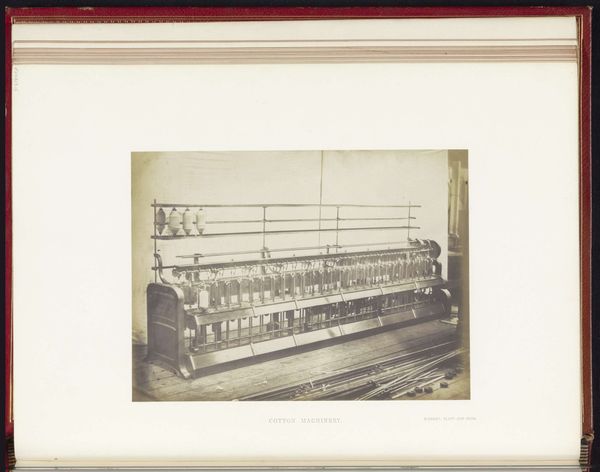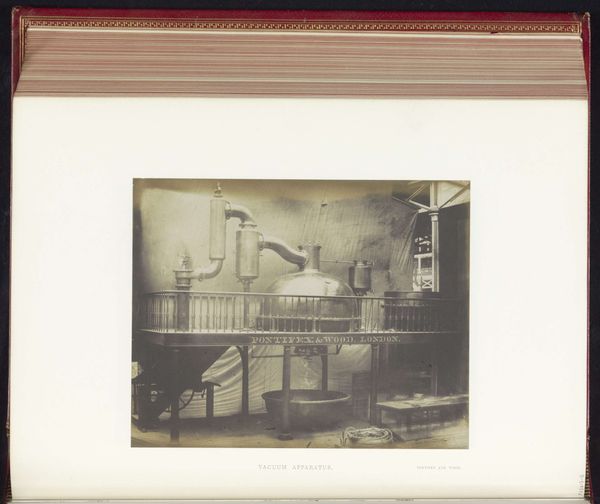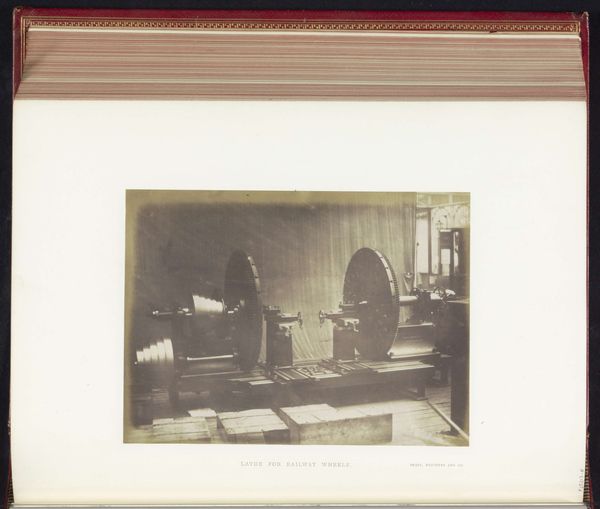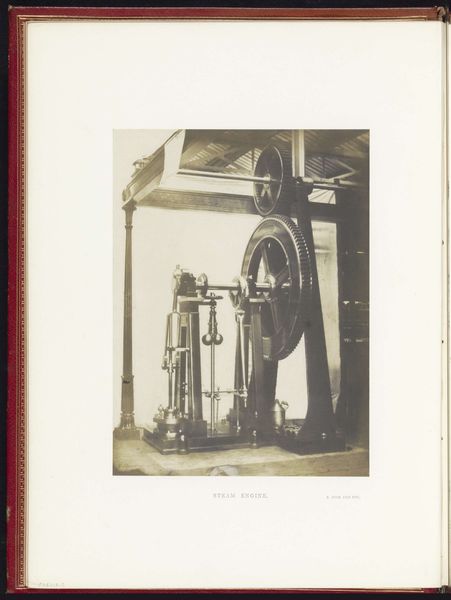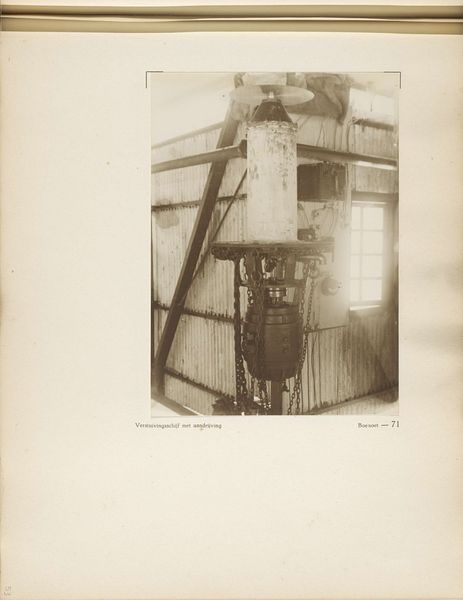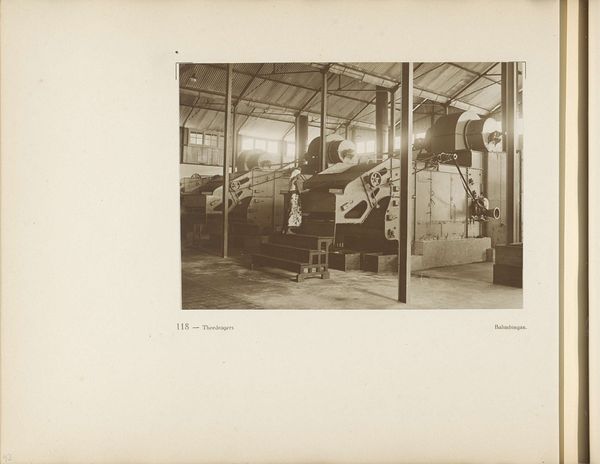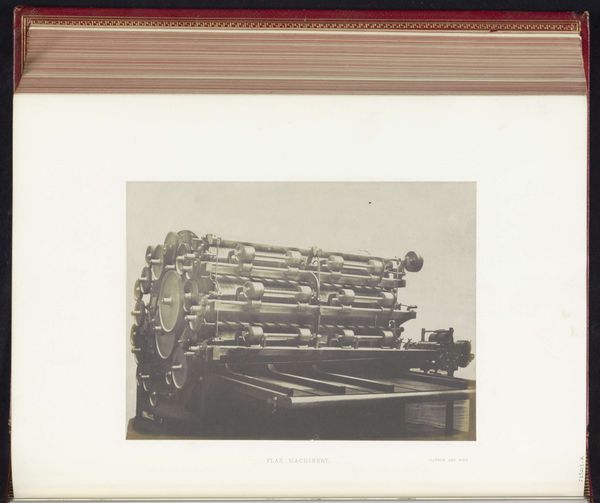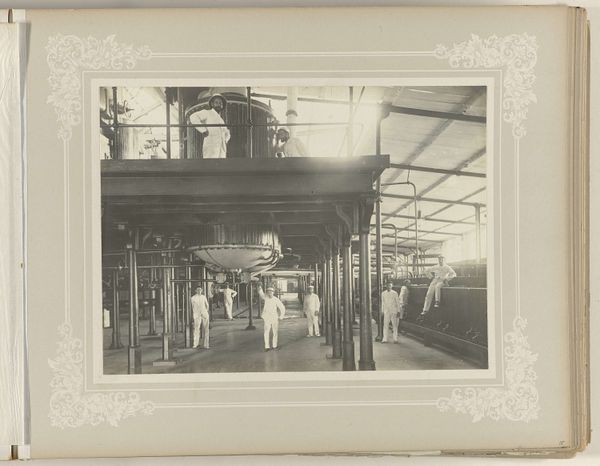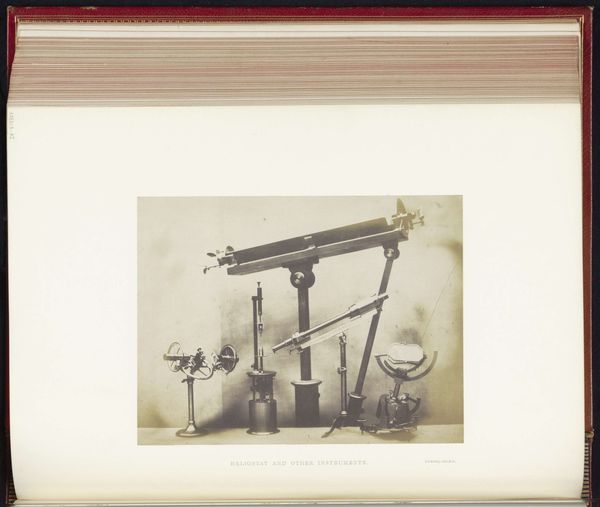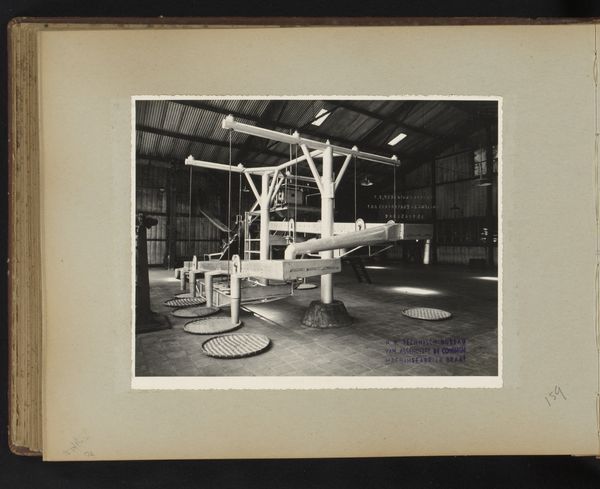
Scheepsmotor op de Great Exhibition of the Works of Industry of All Nations in 1851 in het Crystal Palace in Londen 1851
0:00
0:00
print, photography, gelatin-silver-print
#
still-life-photography
# print
#
photography
#
gelatin-silver-print
#
history-painting
#
realism
Dimensions: height 152 mm, width 204 mm
Copyright: Rijks Museum: Open Domain
Curator: I'm just mesmerized by the sepia tones, the ghostly presence of it all... Almost like peering into a Victorian dream, or a steampunk novel coming to life. Editor: Indeed. This gelatin silver print by C.M. Ferrier and F. von Martens captures a marine engine showcased at the Great Exhibition in 1851. It's an artifact not just of engineering, but of labor and industry, meticulously photographed to broadcast the triumphs of the era. Curator: Oh, absolutely! There’s such a strange poetry in documenting such cold, hard machinery. It looks oddly beautiful. And it has so much depth in its silver print. I am curious how people moved when facing this giant mechanism? Editor: Exactly, look at the staging! Here is industry presented as both art and evidence. Gelatin silver prints allowed for mass reproduction, facilitating this distribution of images promoting industrial advancement and Britain's imperial prowess. Curator: So, a tool not just for seeing, but for selling! Though it feels more elegiac than promotional to me now. A little like remembering the future people dreamed of way back when, I imagine those that produced this photo worked extremely hard. Editor: Yes, we see photography used here, to elevate and broadcast Victorian Britain's ingenuity but it would not have been possible without exploiting cheap labor and a global extraction economy to harvest raw materials. These shiny technologies conceal exploitative practice. Curator: It really does put a strange taste in one’s mouth. Thinking of all of those unacknowledged hands working hard under harsh conditions. The engine almost appears too clean. How can something become a triumph and tragedy at the same time? Editor: Precisely. Even now, this technology that defined modernity requires we acknowledge its consequences in both human and environmental cost, as much as Ferrier and Martens celebrated progress. Curator: The way it juxtaposes elegance and heaviness makes you really ruminate. Thank you! Editor: A reminder that "progress" is rarely without a cost worth critically examining.
Comments
No comments
Be the first to comment and join the conversation on the ultimate creative platform.
